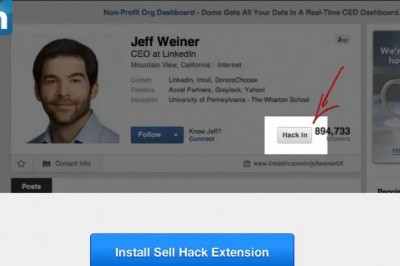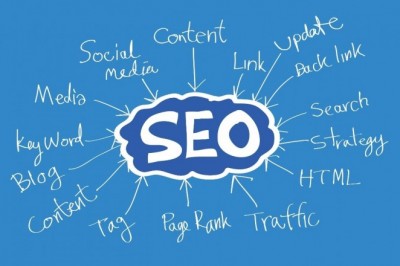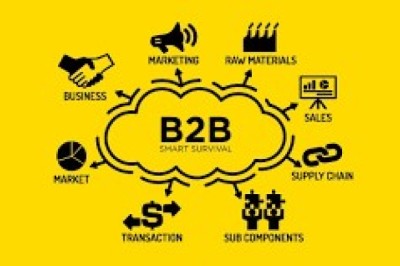SEO stands for “search engine optimization.” It’s the process of increasing your website traffic through search engine results.
This helps your website become more discoverable. When potential customers search terms related to your brand, they’ll have a better chance of discovering your website and becoming a customer.
Imagine you have a fitness business. You offer dieting and workout tips on your website.
You also have an article about losing weight. With good SEO practices, a person searching a keyword like “how to lose weight” might have a better chance of finding that article—and therefore, your brand.
That’s the power of SEO.
5 Reasons You Need to Optimize your Website

There are plenty of reasons to learn how to optimize for conversions and SEO in tandem.
First you need to know how they work together to create a leaner, more productive website.
Let’s look at five specific reasons to optimize your site immediately and to continually optimize your site over time.
1. Make your website useful for your specific audience
Marketers sometimes feel as though they’re at odds with Google. The search engine fails to rank their best content, for instance, or they see a huge drop in traffic after an algorithmic update.
In reality, though, your goals and Google’s are the same:
- Serve up the best possible content for your audience
- Create a positive website user experience
- Prioritize content that offers significant value
You just go about it in different ways. Google’s analyzing millions of websites, while you’re analyzing your specific audience’s behaviors.
Google uses more than 200 ranking signals to decide which pieces of content appear on the first page of the search engine results. The algorithm pays careful attention to signs that a particular web page will give searchers the information they seek.
When you focus on SEO, you choose primary and latent semantic keywords related to search intent. You write content that people love to read and make sure you provide meta information to help Google better understand the copy.
If you optimize your website for conversions, you focus on guiding visitors toward a specific goal, whether it’s joining your email list or buying one of your products. Just like Google, you want to give your audience exactly what those consumers want.
Knowing how to optimize your website for SEO and conversions simultaneously furthers both of those goals and creates a better relationship between your site and the search engines.
2. Grow your organic traffic
The average business spends about 1 percent of its total revenue on advertising. If your business rakes in $1 million per year, you might spend $10,000 on advertising.
While that might seem like a small percentage, it adds up. Some industries, such as retail, spend considerably more on ads.
Attracting organic traffic through SEO, however, is free. You have to pay to develop and promote the content, but that’s not nearly as expensive as pay-per-click.
When you compare the close rate between searchers who arrive at your site via organic search and those that come via paid ads, the results are illustrative. Organic search closes at nearly 15 percent, while paid search closes at less than 2 percent.
Invest your time and, if necessary, money into growing your organic traffic. It might take longer, but the results last longer and result in more conversions.
3. Capitalize on existing traffic
When people visit your website, you don’t want them to poke around and leave. Instead, you want to make a lasting impression and encourage them to return.
Learning how to optimize your website for conversions requires an understanding of the user experience. Figure out how visitors navigate your site, whether they scroll down the page, and how often they click on your calls to action (CTAs).
If someone signs up for your email list, you can contact them at a later date with offers, incentives, and more. You can also encourage visitors to follow you on social, visit your product pages, and read your blog posts.
Capitalizing on existing traffic helps improve your conversion rate because a higher percent of your organic traffic will convert. You know what offer your audience will respond to and how to present it to them in an appealing way.
4. Force your website to work harder
Anyone can build a website — even a beautiful website — but far fewer can create a website that reliably produces conversions. After all, the average conversion rate across all industries is less than 2.5 percent.
You want your audience to convert at much higher rates. To do so, you have to study your audience closely and give them what they need and expect.
If you’ve done the research and applied the data to your site, you can expect a jump in conversion rates. The people who visit your site find what they need quickly and appreciate your brand for providing it. Brand loyalty results.
SEO always comes first, though. Without traffic, you can’t have conversions. Create a site with valuable, sticky content and plenty of opportunities for visitors to convert.
5. Give your audience what they want and expect
Imagine this scenario:
You have an e-commerce site that sells shoes. A customer needs a new pair of running shoes and conducts a Google search for the best shoes for runners. You’ve written a long, in-depth blog post about choosing running shoes, including brand recommendations and information for different types of runners.
The visitor reads the article. At the end, you have a lead magnet that offers a free sizing and fit chart for runners. All the visitor has to do is sign up for your email list.
You send the lead magnet immediately to the visitor. A few days later, you send out a coupon code for your online store along with images of running shoes. The customer realizes you have what meets his or her needs, and the discount incentivizes an immediate sale.
As you can see, SEO and conversion rate optimization work hand-in-hand. If you meet your audience’s expectations and help them find what they want, you’ll secure a customer.




















Facebook Conversations
Disqus Conversations